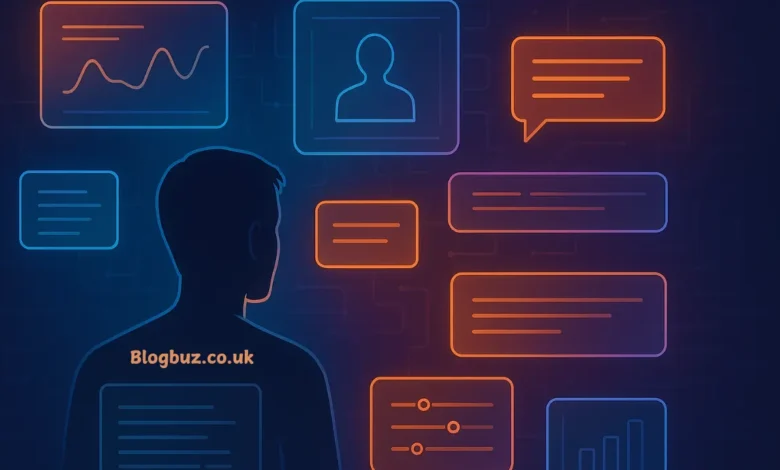Rapelusr: The Future of Personalized Digital Experiences

In a rapidly evolving digital world, user experience is no longer a passive journey — it’s an active conversation. Enter Rapelusr: a next-generation framework reshaping how technology interacts with people. This groundbreaking term may sound unfamiliar today, but it’s fast becoming a cornerstone in the future of digital personalization, user flow engineering, and adaptive software interfaces. So, what is Rapelusr, and why are digital experts, UX designers, and AI developers paying attention?
What is Rapelusr?
Rapelusr is an emerging digital architecture or framework that focuses on real-time adaptation to user behavior. It combines principles from artificial intelligence, behavioral psychology, and UX/UI design to create modular, innovative environments that evolve in response to the user’s intent, habits, and emotions.
The term itself appears to be a portmanteau — possibly rooted in “rappel” (suggestive of guided descent or navigation) and “usr” (a nod to “user”). At its core, Rapelusr proposes a bold idea: that technology should not only serve but also anticipate and adapt to human needs.
The Core Philosophy Behind Rapelusr
Unlike static interfaces or rigid app structures, Rapelusr is built around the philosophy of behavioral resonance — that is, recognizing subtle interaction cues and recalibrating the digital environment accordingly. This means that if a user shows signs of confusion, fatigue, excitement, or distraction, the interface changes accordingly.
It’s like a digital concierge that adjusts:
- Font sizes based on eye strain
- Layouts based on hand dominance
- Workflow steps based on user pacing or decision fatigue
Rapelusr platforms do this using:
- Predictive modeling
- Latent feedback interpretation
- Semantic UI distribution
To ensure that the experience is not just user-friendly but user-synced.
Rapelusr as a Modular Framework
At a structural level, Rapelusr isn’t an app or tool — it’s a framework. Think of it as an invisible skeleton that developers can plug into websites, mobile apps, or SaaS platforms. This skeleton contains modular nodes that:
- Activate or deactivate in real-time
- Rearrange based on context
- Learn from each interaction
For instance, if you’re using a health app powered by Rapelusr, it could rearrange dashboard elements based on your time of day, medical condition, stress levels, or even recent health scares.
This modularity makes it perfect for:
- Healthcare platforms
- E-commerce personalization
- Enterprise productivity dashboards
- Virtual learning environments
- Web3 and Metaverse onboarding tools
How Rapelusr Leverages AI & Emotion Tracking
Where traditional frameworks rely on user input, Rapelusr takes it a step further by integrating affective computing — that is, interpreting emotion through data.
Using AI models trained to detect mood shifts through click delay, scroll velocity, hesitation patterns, and even voice or facial cues (with permission), Rapelusr platforms:
- Detect confusion or delight
- Offer timely support
- Adjust difficulty or depth dynamically
Imagine an educational platform where Rapelusr notices when you’re stuck on a concept and reshapes the lesson flow — or an investment app that softens aggressive CTA prompts when it senses stress.
This level of empathy-based UX is what makes Rapelusr more than just innovative design — it’s human-first design.
Rapelusr in Real-World Applications
Let’s examine how companies and sectors might utilize Rapelusr in the next few years.
Healthcare
Telemedicine platforms using Rapelusr can shift from generic dashboards to personalized care environments, tailoring everything from symptom input flows to medication reminders based on individual habits and emotional states.
E-Commerce
With Rapelusr, shopping platforms can rearrange product suggestions, filters, and even pricing packages in real-time — creating a sense of hyper-personal attention without the user even realizing why their journey feels “just right.”
Education
Online courses can adapt to each learner’s pace, interest, or fatigue — speeding up, slowing down, or changing content type based on subtle cues, not just test scores.
Workspaces
Remote productivity tools powered by Rapelusr can reformat dashboards, automate repetitive actions, or even hide distracting features during focused tasks — making teams more efficient and less overwhelmed.
The Privacy and Ethical Debate Around Rapelusr
Of course, with great personalization comes great responsibility. The more Rapelusr learns about its users, the more data it must gather, analyze, and protect.
Key ethical considerations include:
- How much behavioral tracking is too much?
- Who controls the data?
- Are emotional triggers being used responsibly?
- Is consent obtained and revocable?
Proponents argue that Rapelusr can be fully privacy-compliant, especially when paired with:
- On-device processing (no cloud exposure)
- Transparent data collection policies
- User-managed controls over emotional tracking
Still, it’s a line that must be walked carefully, especially in sensitive sectors like health and finance.
Rapelusr vs. Traditional UX Systems
To highlight the difference, let’s contrast Rapelusr-based experiences with conventional UX:
| Feature | Traditional UX | Rapelusr Framework |
|---|---|---|
| Layout | Fixed | Dynamic & modular |
| Response to Emotion | None | Real-time adaptation |
| Personalization | Manual (user input/settings) | Automated (behavior-driven) |
| Learning Capability | Limited (cookies/preferences) | Deep learning over time |
| Use Case | One-size-fits-all | One-size-fits-you |
Rapelusr has the edge in terms of depth, personalization, and empathy.
The Future Potential of Rapelusr
As AI continues to integrate deeper into our daily experiences, frameworks like Rapelusr will likely become the standard backbone of all digital interfaces.
Imagine:
- Cars with Rapelusr dashboards that adjust based on your stress before a meeting
- Fitness trackers that ease routines when your emotional state suggests burnout
- Smart homes that intuitively adjust lighting, music, and communication access based on mood and presence
Even the metaverse and AR/VR ecosystems are likely to lean on Rapelusr-like systems to maintain user comfort, minimize overload, and optimize immersion.
In many ways, Rapelusr isn’t just a framework — it’s the future of how digital environments feel more human.
Conclusion: Why Rapelusr Matters
In a world saturated with digital noise, the platforms that survive and thrive are those that respect the user’s experience, adapt to their emotions, and grow with them. That’s what Rapelusr represents — a shift from passive digital consumption to active digital companionship.
By combining AI, emotional intelligence, and modular design, Rapelusr creates systems that not only look good but also feel right. As companies rush to build the next generation of apps and tools, those who integrate Rapelusr-like thinking will lead to trust, satisfaction, and engagement.
You May Also Read: Qawerdehidom: The Digital Philosophy Reshaping Innovation and Connectivity




